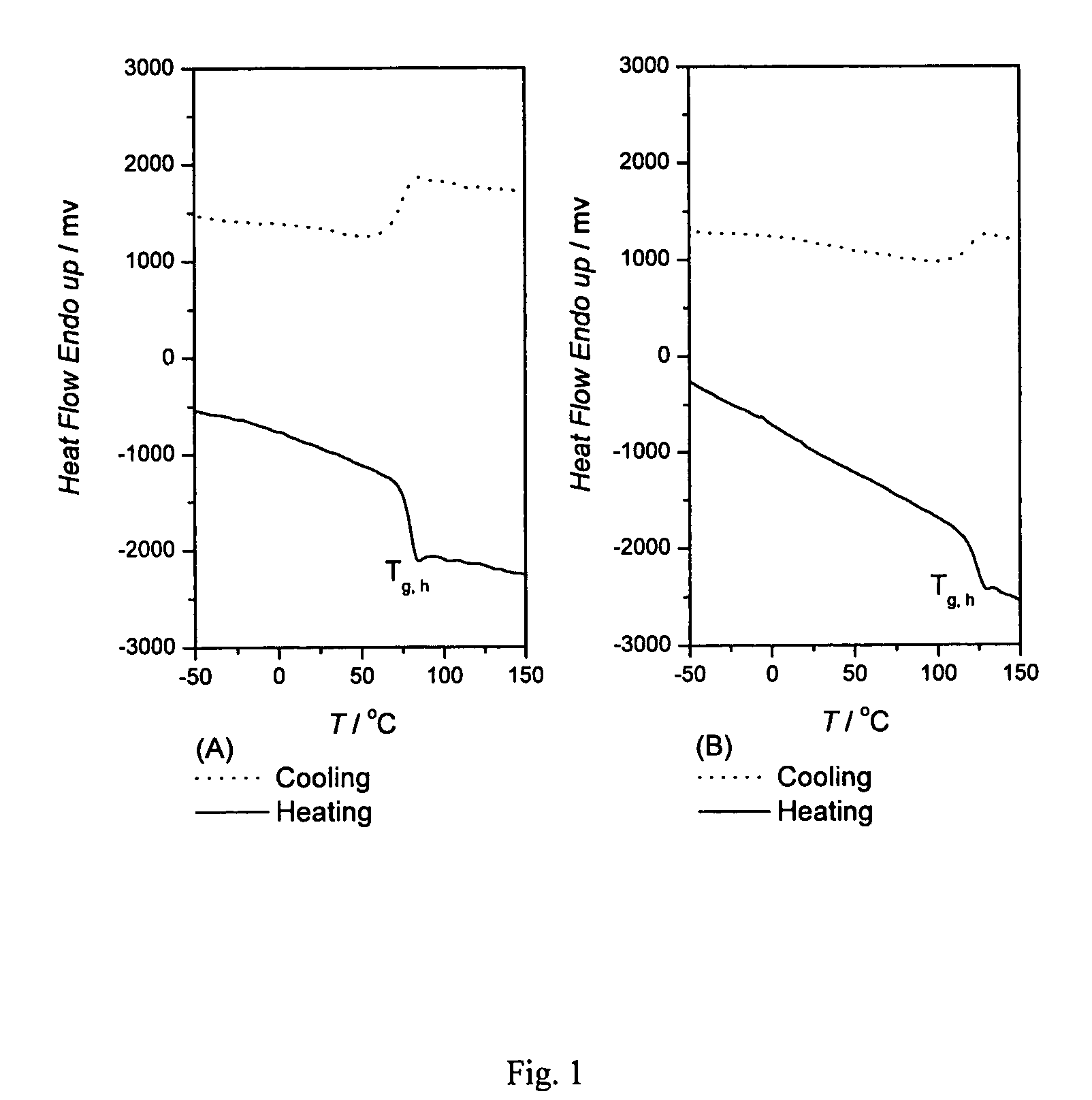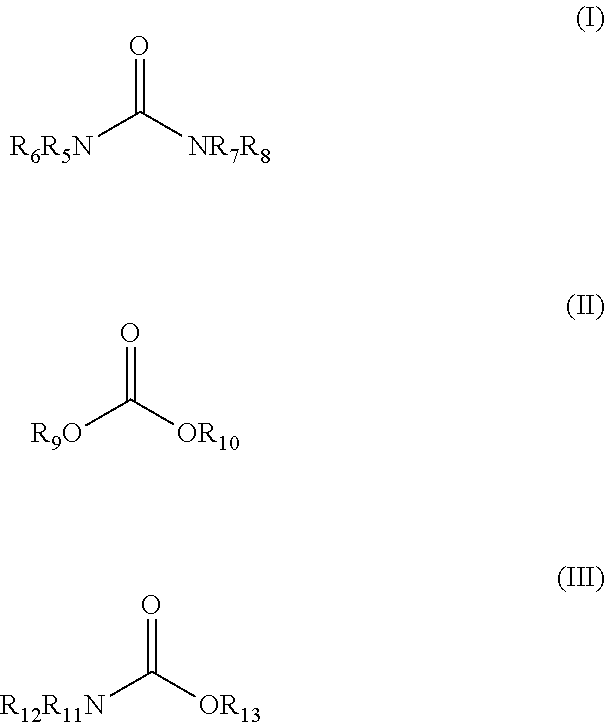Process for producing bis-alkoxylated diols of bisphenol a from spent polycarbonate discs(PC) or PC waste
a polycarbonate disc or waste polycarbonate technology, applied in the direction of ether preparation, organic chemistry, chemistry apparatus and processes, etc., can solve the problem that the pc recycled by the bayer company is only used as recycled materials and not regenerated for new uses
- Summary
- Abstract
- Description
- Claims
- Application Information
AI Technical Summary
Benefits of technology
Problems solved by technology
Method used
Image
Examples
example 1
Preparation of bis-hydroxyethyl Ether of Bisphenol A (BHE-BPA)
[0025]To a 500 mL round bottom flask, equipped with a magnetic stirrer, thermometer, and reflux condenser, was charged with waste polycarbonate (50.8 g; 0.2 mol), ethylene glycol (124.0 g; 2.0 mol) and Na2CO3 (0.4 g) as a catalyst. Then the reaction mixture was heated to 180° C. under atmospheric pressure and was kept at the same temperature for about 20 minutes. Thereafter, the reaction mixture was charged with urea (21.6 g; 0.36 mol) and ZnO (0.2 g) as a catalyst. The mixture was heated at 180° C. under atmospheric pressure for 2 hours, cooled to room temperature, and then filtered out the catalyst. The excess unreacted ethylene glycol (88.4 g; 89% recovery) was removed by vacuum distillation. Toluene (50 mL) was poured into the distillation residue for purification the product by re-crystallization. The white solid was filtered and dried to afford BHE-BPA (63.2 g, 99% yield; Melting point 112-113° C.).
example 2
Preparation of bishydroxypropyl Ether of Bisphenol A (BHP-BPA)
[0026]Repeat the reaction steps of Example 1 wherein reagents, quantities, reaction temperature and time are shown in Table 1. In addition, the final purification step is performed by ethyl acetate extraction.
[0027]
TABLE 1WastePCAlkoxylationPolycar-DigestionReactionExam-bonateGlycolTimeUreaTimeYieldple(mol)(mol)(min)(mol)(hour)(%)10.200Ethylene200.36299Glycol(2)20.118Propylene300.24391Glycol(12)
[0028]The digestion product of phase I reaction obtained in Example 1 was found to consist of bisphenol A (BPA, 26%), monohydroxyethyl ether of BPA (MHE-BPA, 40%) and bishydroxyethyl ether of BPA (BHE-BPA, 25%) by HPLC analysis. The digestion product of phase I reaction obtained in Example 2 was found to consist of bisphenol A (BPA, 27%), mono-hydroxypropyl ether of BPA (MHP-BPA, 53%) and bis-hydroxypropyl ether of BPA (BHP-BPA, 21%) by HPLC analysis.
example 3
Preparation of bis-hydroxybisethoxy Ether of Bisphenol A
[0029]To a three-neck 500 mL round bottom flask, equipped with a magnetic stirrer, a thermometer, and a reflux condenser, was charged with waste polycarbonate (101.6 g; 0.4 mol / carbonate unit), ethylene glycol (124.2 g; 2.0 mol) and Na2CO3 (1.5 g) as a catalyst. Then, the reaction mixture was heated to 170° C. under atmospheric pressure with a nitrogen atmosphere until polycarbonate is dissolved to form a clear solution. During the reaction, ethylene glycol is refluxed back to the flask by the reflux condenser.
[0030]Thereafter, the reaction mixture was charged with urea (48.08 g; 0.8 mol) and ZnO (1.5 g) as a catalyst. The mixture was heated at 170° C. under atmospheric pressure for 7 hours until bisphenol A (BPA) and mono-hydroxypropyl ether of BPA (MHP-BPA) are completely reacted.
[0031]After vacuum distillation at 120° C. under 1.7×10-4˜1.95×10-4 atm, the distillation residue is recovered to afford the desired product (135.38...
PUM
| Property | Measurement | Unit |
|---|---|---|
| temperature | aaaaa | aaaaa |
| weight ratio | aaaaa | aaaaa |
| weight ratio | aaaaa | aaaaa |
Abstract
Description
Claims
Application Information
 Login to View More
Login to View More - R&D
- Intellectual Property
- Life Sciences
- Materials
- Tech Scout
- Unparalleled Data Quality
- Higher Quality Content
- 60% Fewer Hallucinations
Browse by: Latest US Patents, China's latest patents, Technical Efficacy Thesaurus, Application Domain, Technology Topic, Popular Technical Reports.
© 2025 PatSnap. All rights reserved.Legal|Privacy policy|Modern Slavery Act Transparency Statement|Sitemap|About US| Contact US: help@patsnap.com



